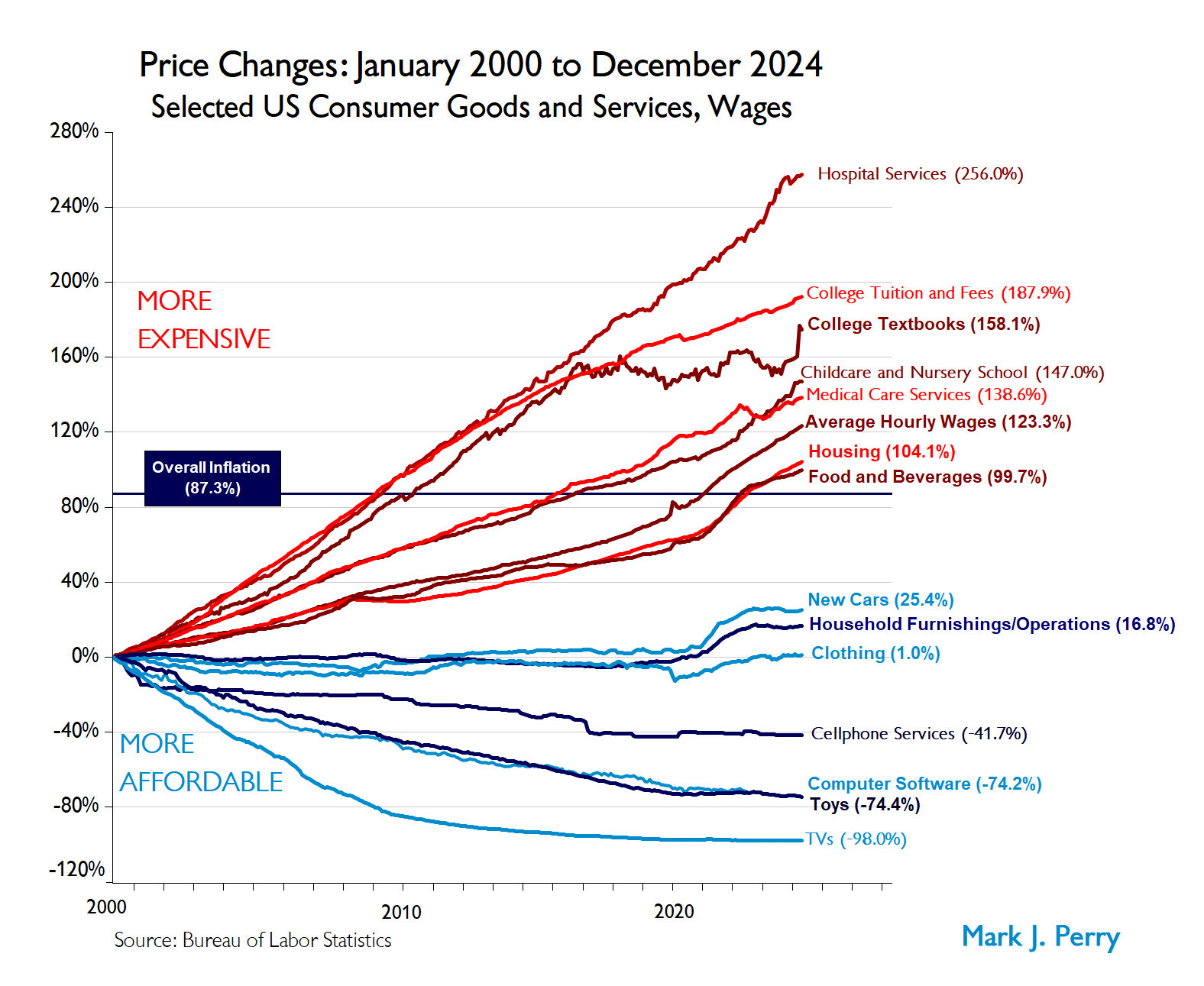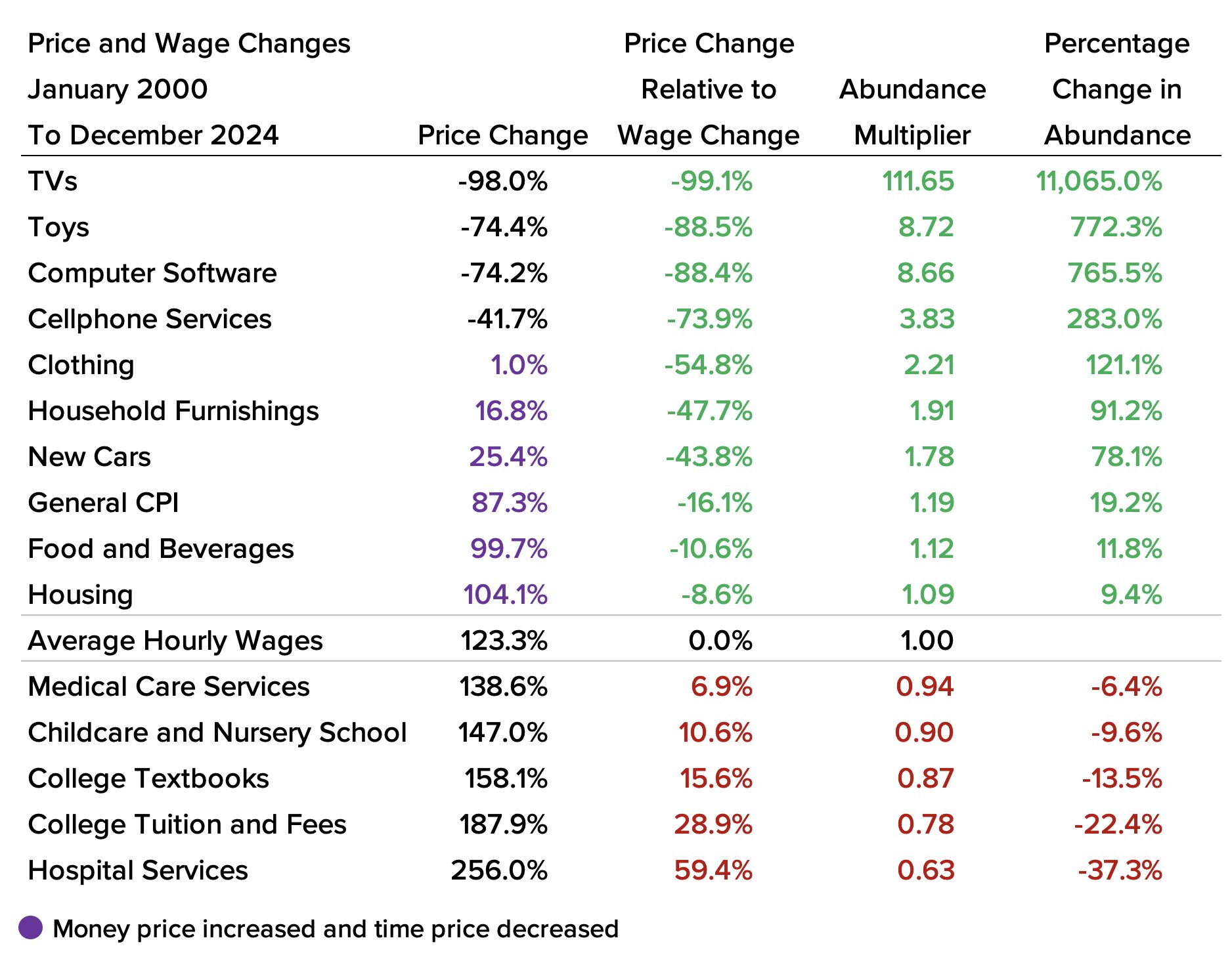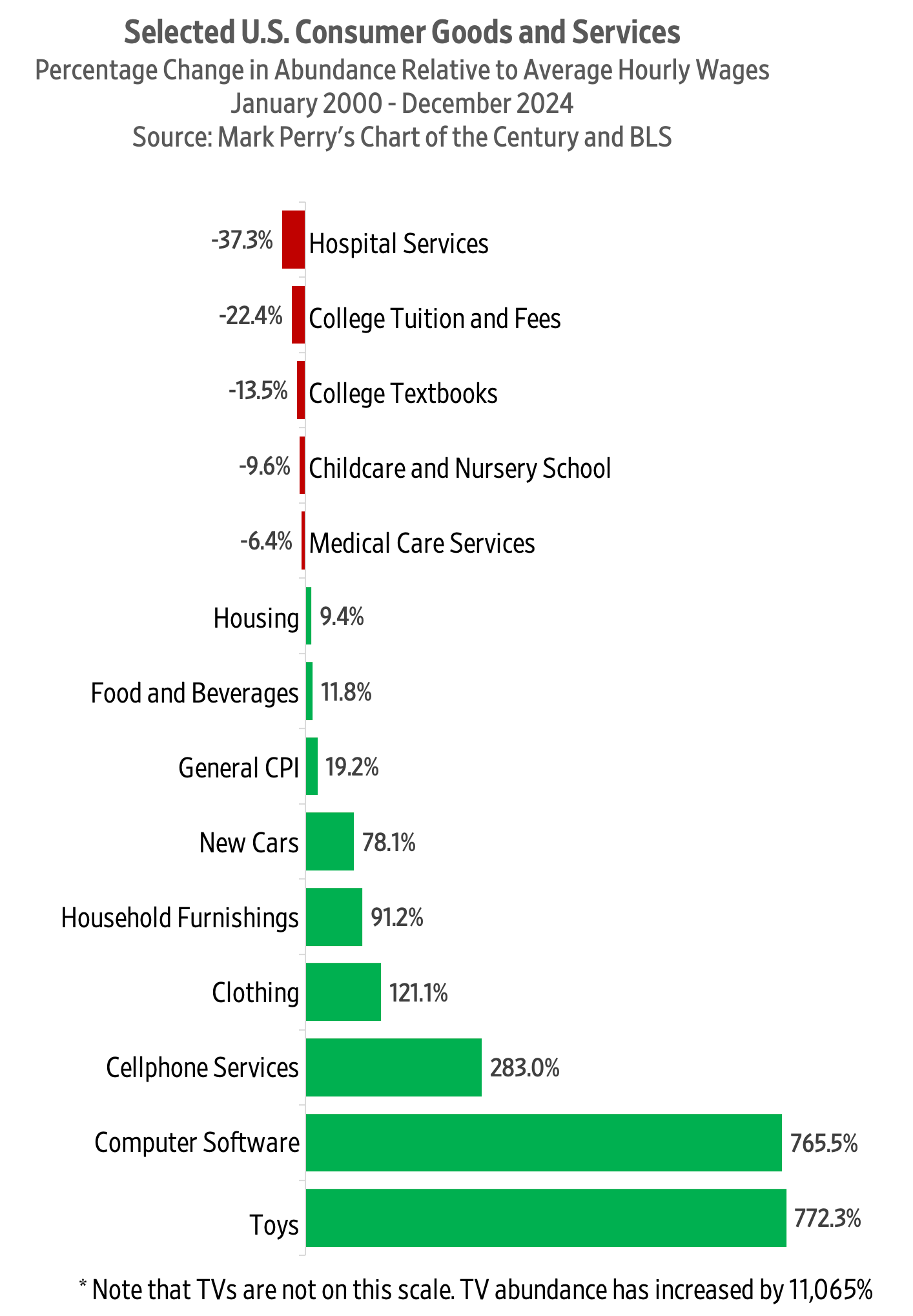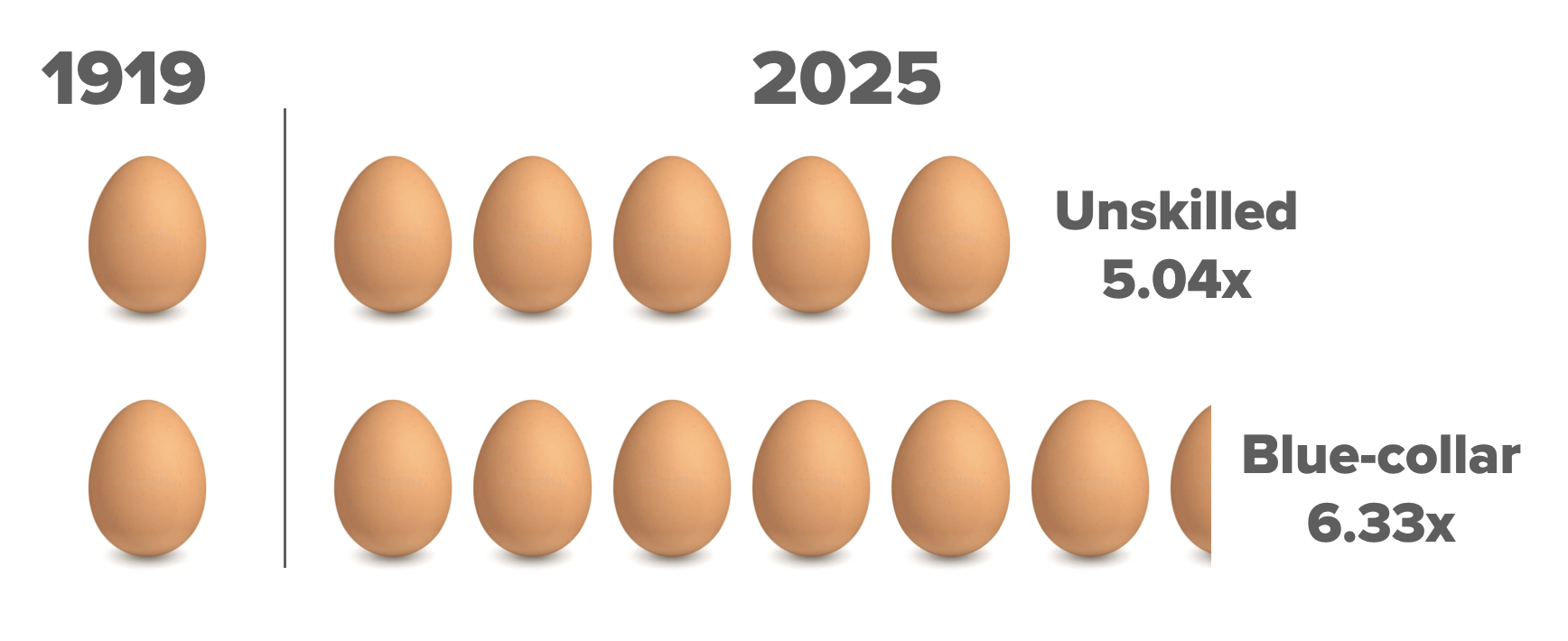Professor Jeremy Horpedahl has provided updated numbers on the percentage changes in four products essential to enjoying our Thanksgiving holiday. Remember, it’s not how expensive things are but how affordable they are that counts. To measure affordability, we must compare prices to wages. This is what time prices do for us. A time price is simply the nominal money price divided by nominal hourly income. Since last year, the nominal money prices of our four essential items have decreased from 0.8 percent to 13 percent, while nominal hourly income has increased by 4.4 percent. That means that personal abundance has increased by between 5.2 percent and 20 percent.
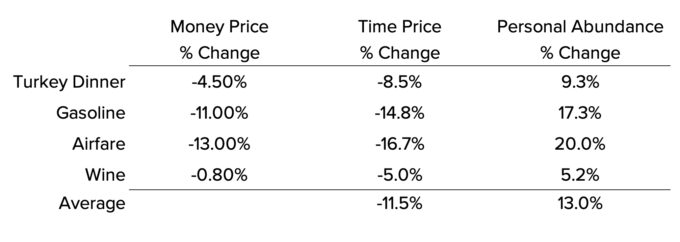
Dividing the percentage change in the nominal money prices by the percentage change in nominal wages reveals the percentage change in the time price. Personal abundance is how much more you now enjoy for the same amount of time relative to last year. We get 13 percent more Thanksgiving this year for the same amount of time it took last year.
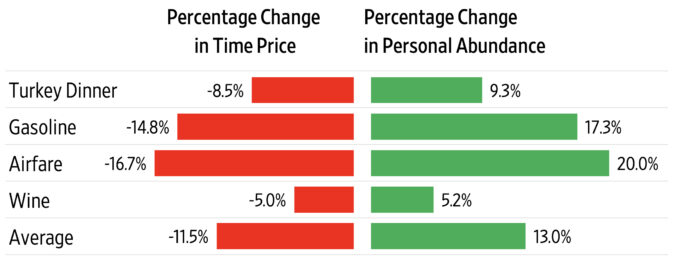
Sources: “Cost of Thanksgiving Dinner Down Slightly from Record High in 2022,” news release, American Farm Bureau Federation, November 15, 2023; U.S. Energy Information Administration, “US Regular All Formulations Gas Price,” FRED Economic Data, Federal Reserve Bank of St. Louis, updated November 13, 2023; Bureau of Labor Statistics, “Consumer Price Index for All Urban Consumers: Airline Fares in US City Average,” FRED Economic Data, Federal Reserve Bank of St. Louis, updated November 14, 2023; Bureau of Labor Statistics, “Average Price: Wine, Red and White Table, All Sizes, Any Origin (Cost per 1 Liter/33.8 Ounces) in US City Average,” FRED Economic Data, Federal Reserve Bank of St. Louis, updated November 14, 2023; and Bureau of Labor Statistics, “Average Hourly Earnings of Production and Nonsupervisory Employees, Total Private,” FRED Economic Data, Federal Reserve Bank of St. Louis, updated November 3, 2023.
We describe the process of transforming scarcities into abundances in our book, Superabundance, available at Amazon. Jordan Peterson calls it a “profoundly optimistic book.” There has never been a better time to create more life.



